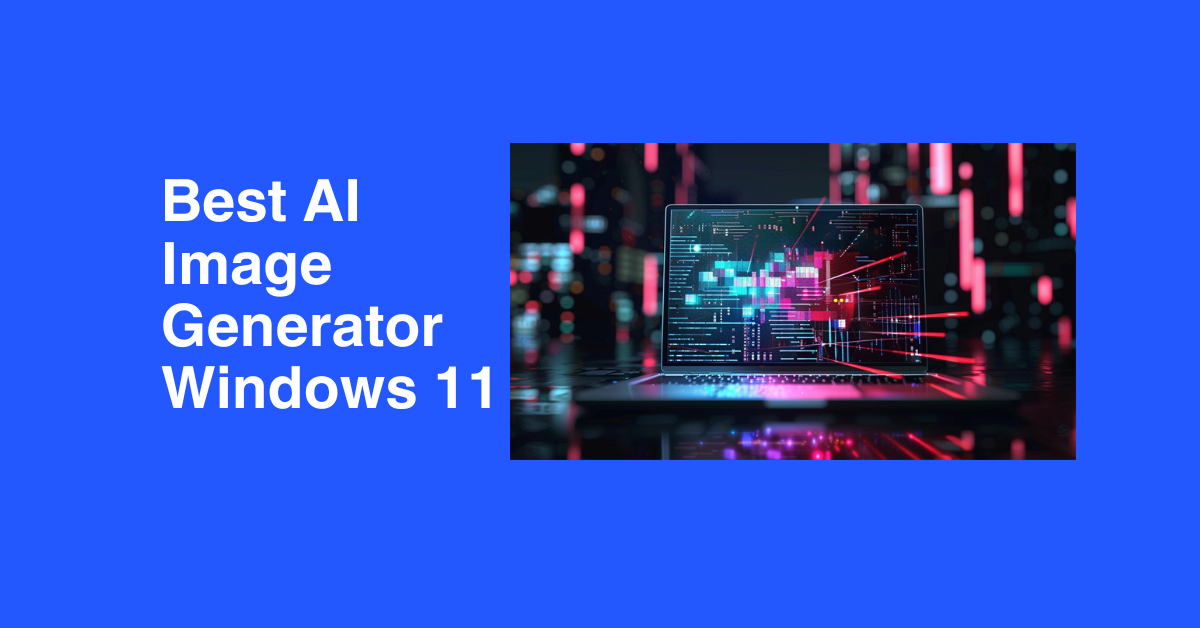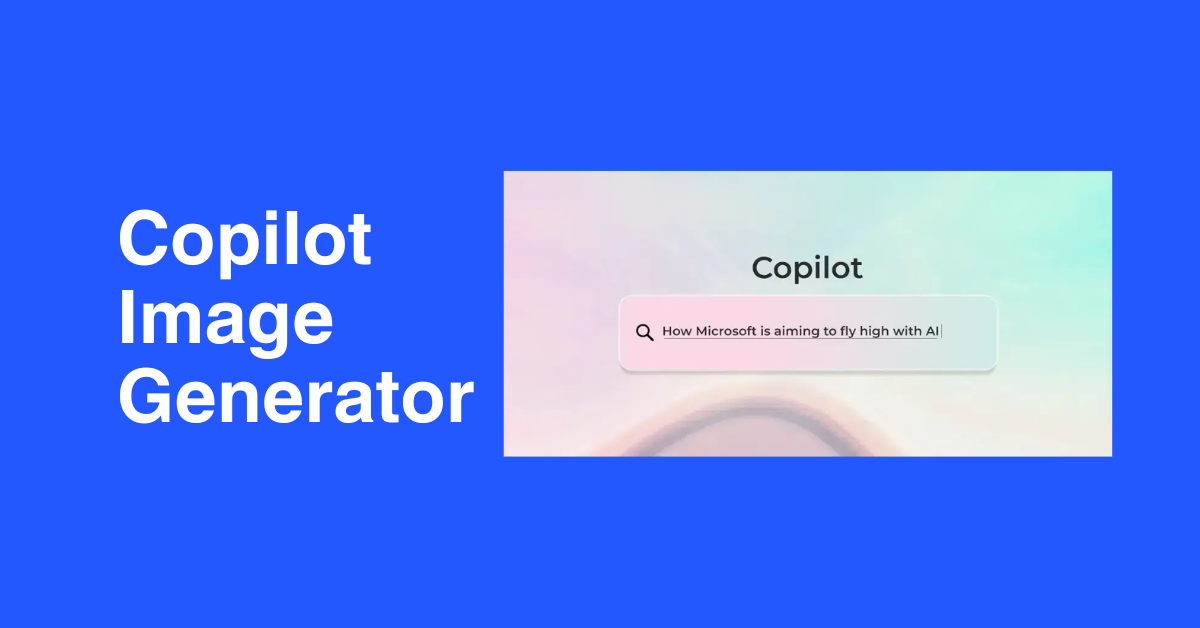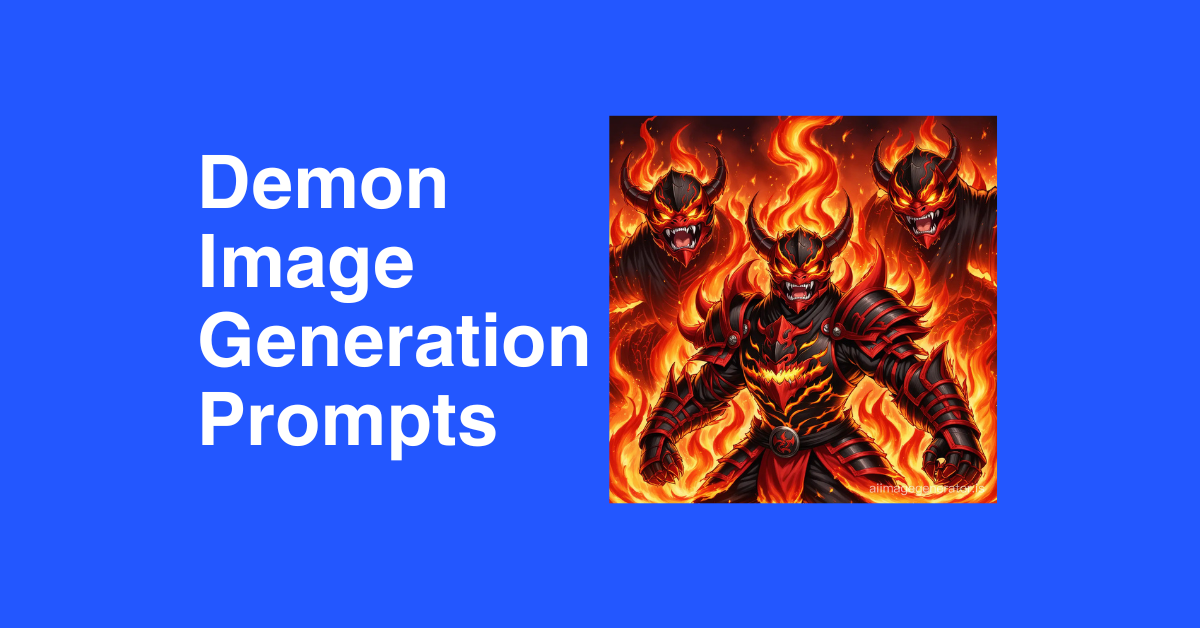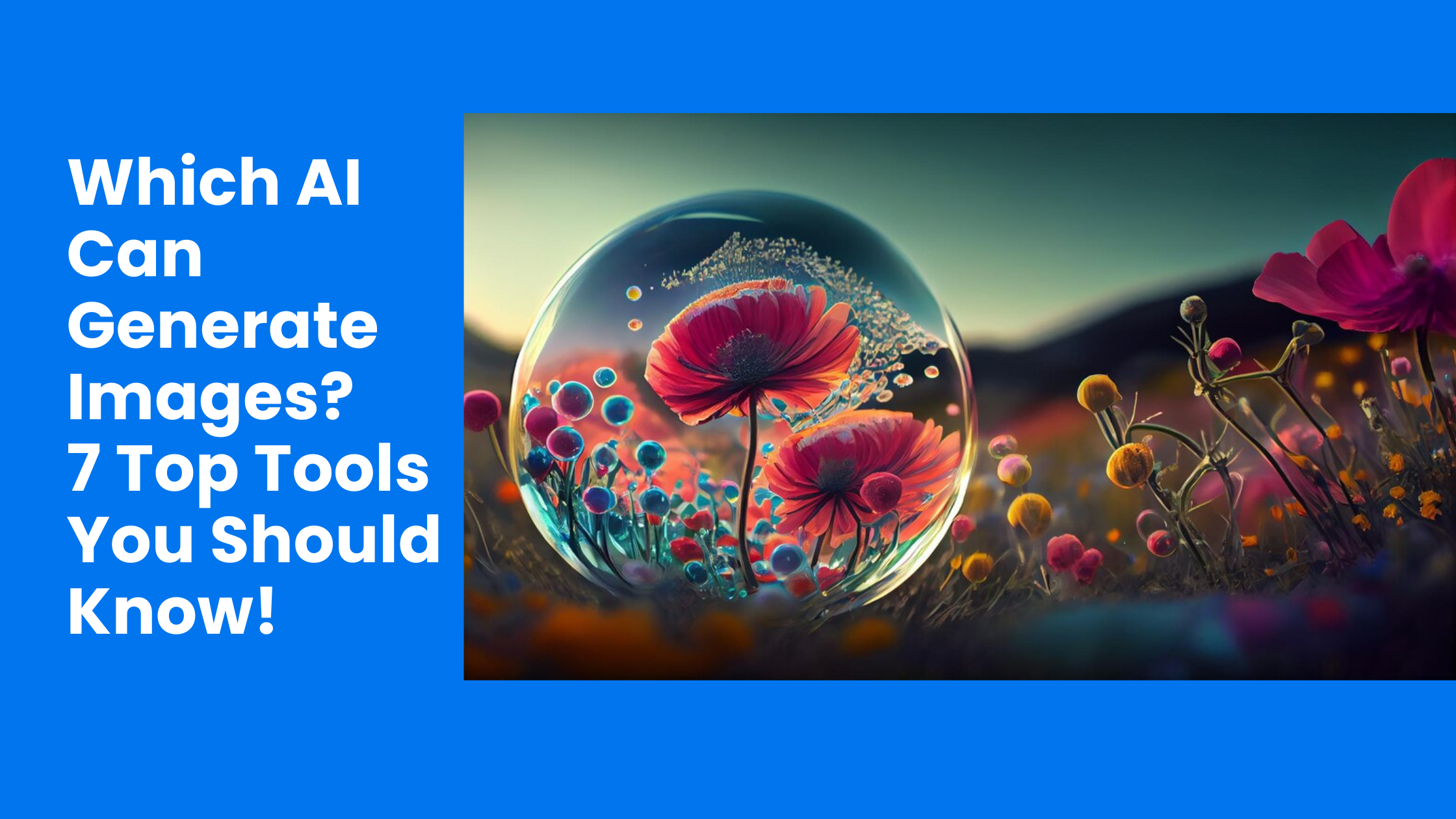
Which AI Can Generate Images? 7 Top Tools You Should Know!
- Image Generators
- November 1, 2024
- No Comments
In recent years, artificial intelligence has made remarkable strides in generating images, leading to an explosion of creativity and innovation in various fields. This technology promises not only to reshape artistic endeavors but has also begun to infiltrate industries such as marketing, design, and entertainment. With numerous tools available, one might wonder: which AI can generate images effectively? In this comprehensive guide, we will delve deep into the world of AI image generators, comparing leading technologies, exploring their applications, and understanding their implications while addressing ethical considerations.
Which AI Can Generate Images? A Comprehensive Guide to Image Generators

As the digital landscape continues to evolve, the demand for high-quality visual content is ever-increasing. Traditional methods of creation often require extensive time and resources, opening the door for AI to play a pivotal role in image generation. By harnessing vast amounts of data, machine learning algorithms can create unique visuals with minimal human intervention.
AI image generators have become incredibly popular due to their ability to create stunning artwork from simple text prompts or existing images. They empower users—ranging from professional artists to casual creators—to tap into new creative possibilities. This section will explore the different types of AI image generators currently available in the market, highlighting their distinctive features and capabilities.
Understanding AI Image Generators
AI image generators utilize a variety of techniques to produce visuals. The most prominent among these technologies include generative adversarial networks (GANs), neural style transfer, and diffusion models. Each has its own methodology and purpose, allowing them to excel in different areas of image creation.
Generative Adversarial Networks, for example, consist of two neural networks—the generator and the discriminator—that work against each other to improve the quality of generated images. The generator creates images while the discriminator evaluates them, leading to a gradual enhancement in output quality through competition.
On the other hand, neural style transfer focuses on blending two images, typically combining the content of one image with the artistic style of another. This technique is particularly popular for creating stylized artworks that evoke famous painters’ styles, making art more accessible to the masses.
Diffusion models, which are gaining traction recently, operate by gradually adding noise to images until they become indistinguishable from random noise, then reversing the process to generate new images. This method allows for diverse and complex imagery generation, showcasing the versatility of AI art tools.
Popular Image Generation Tools
Among the myriad of AI image generators available today, several stand out due to their exceptional capabilities and user-friendly interfaces. Some noteworthy mentions include DALL-E 2, Stable Diffusion, and Midjourney.
DALL-E 2, developed by OpenAI, builds upon the original DALL-E model known for its ability to generate plausible and contextually relevant images from textual descriptions. Its advanced architecture leverages massive datasets and sophisticated algorithms to produce high-quality images that align closely with user inputs.
Stable Diffusion is an open-source image synthesis model that accommodates various use cases, from generating realistic portraits to fantastical landscapes. Its flexibility and accessibility have garnered significant attention within the creative community, allowing users to fine-tune outputs based on preferences.
Midjourney, a relatively newcomer, emphasizes community-driven development and collaboration amongst artists. It boasts an engaging platform where users can share their creations and ideas while simultaneously refining the model through feedback, thus fostering a unique environment for growth and experimentation.
The Impact of AI on Creative Industries
The arrival of AI image generators has sparked fresh debates about the intersection of technology and creativity. Artists and designers now have access to powerful tools that can enhance their workflows, enabling them to streamline repetitive tasks and focus on more complex creative challenges.
Moreover, the democratization of art creation afforded by AI tools means that anyone can produce visually striking content without formal training. This shift has profound implications for artistic expression, as it opens avenues for diverse voices to emerge within the art world.
Yet, the increasing reliance on AI-generated imagery raises questions about authenticity and authorship. As we embrace these innovative tools, it becomes essential to assess how they can coexist with traditional methodologies, shaping the future of creative practices.
Stable Diffusion vs. DALL-E 2 vs. Midjourney: A Detailed Comparison of Image Generation AI

With varied capabilities and approaches, choosing the right AI image generator can be a daunting task. In this section, we will provide a detailed comparison of three leading image generation AIs: Stable Diffusion, DALL-E 2, and Midjourney. Understanding their unique features, strengths, and weaknesses will help you determine which tool best suits your needs.
Overview of Each Platform
Each platform offers distinct advantages tailored for different user requirements. DALL-E 2 excels in creating imaginative and surreal images based on written prompts while maintaining a strong adherence to detail and coherence. It’s particularly effective for generating diverse compositions and intricate designs.
Stable Diffusion, being open-source, boasts a flexible approach with customization options that cater to individual preferences. Users can adjust parameters such as resolution, style, and complexity, allowing for a higher degree of personalization. This adaptability makes Stable Diffusion suitable for both casual users and professionals seeking specific outcomes.
Midjourney’s strength lies in its community-centric ethos, emphasizing collaboration and feedback among users. The platform fosters a rich environment for sharing ideas and inspirations, making it an attractive option for those looking to connect with other creatives while experimenting with AI-generated imagery.
Image Quality and Fidelity
When evaluating image generators, the quality and fidelity of the produced images remain paramount. DALL-E 2 sets a high standard with its impressive attention to detail and accurate rendering of concepts, often producing images that appear almost photorealistic. The model’s accuracy in conveying complex ideas through visuals often leads to striking results that resonate well with audiences.
Stable Diffusion also delivers commendable image quality, especially considering its customizable nature. Users can experiment with different parameters to achieve unique results, tailoring images according to personal taste and vision. The model’s ability to adapt to various styles, whether abstract or realistic, enhances its appeal across multiple disciplines.
Midjourney, too, generates captivating visuals; however, its focus on artistic flair sometimes results in outputs that prioritize aesthetics over strict realism. This inclination towards stylization can be advantageous for users seeking more expressive or interpretive artwork rather than precise representations.
User Experience and Accessibility
The user interface and accessibility of each platform significantly influence the overall experience for creators. DALL-E 2 offers a straightforward interface, allowing users to quickly input text prompts and receive images without extensive technical knowledge. However, access may be limited, requiring users to navigate waiting lists or subscription models for full functionality.
In contrast, Stable Diffusion’s open-source framework permits greater accessibility, as users can run the model locally or leverage cloud-based services. The active online community surrounding Stable Diffusion facilitates knowledge-sharing and support for newcomers, enhancing the overall learning curve for users at any skill level.
Midjourney promotes engagement and interaction through its Discord server, where users can participate in discussions and showcase their creations. This community-focused approach encourages creativity and collaboration, making it easier for beginners to find inspiration and guidance as they explore the platform.
Cost Considerations
Cost plays a critical role in determining which AI image generator is right for you. DALL-E 2 operates on a credit-based system, wherein users purchase credits to generate images. While this model provides control over costs, users need to consider their budget when planning projects.
Stable Diffusion, being open-source, offers significant cost advantages since users can run it locally without incurring additional fees. However, cloud-based options may still involve costs for hosting, depending on user preferences and requirements.
Midjourney operates on a subscription basis, providing various tiers that grant users different levels of access and usage. This tiered structure allows users to select a plan that aligns with their needs and budget, catering to both casual users and professionals alike.
Unlocking Creative Potential: How AI Image Generators are Transforming Art and Design
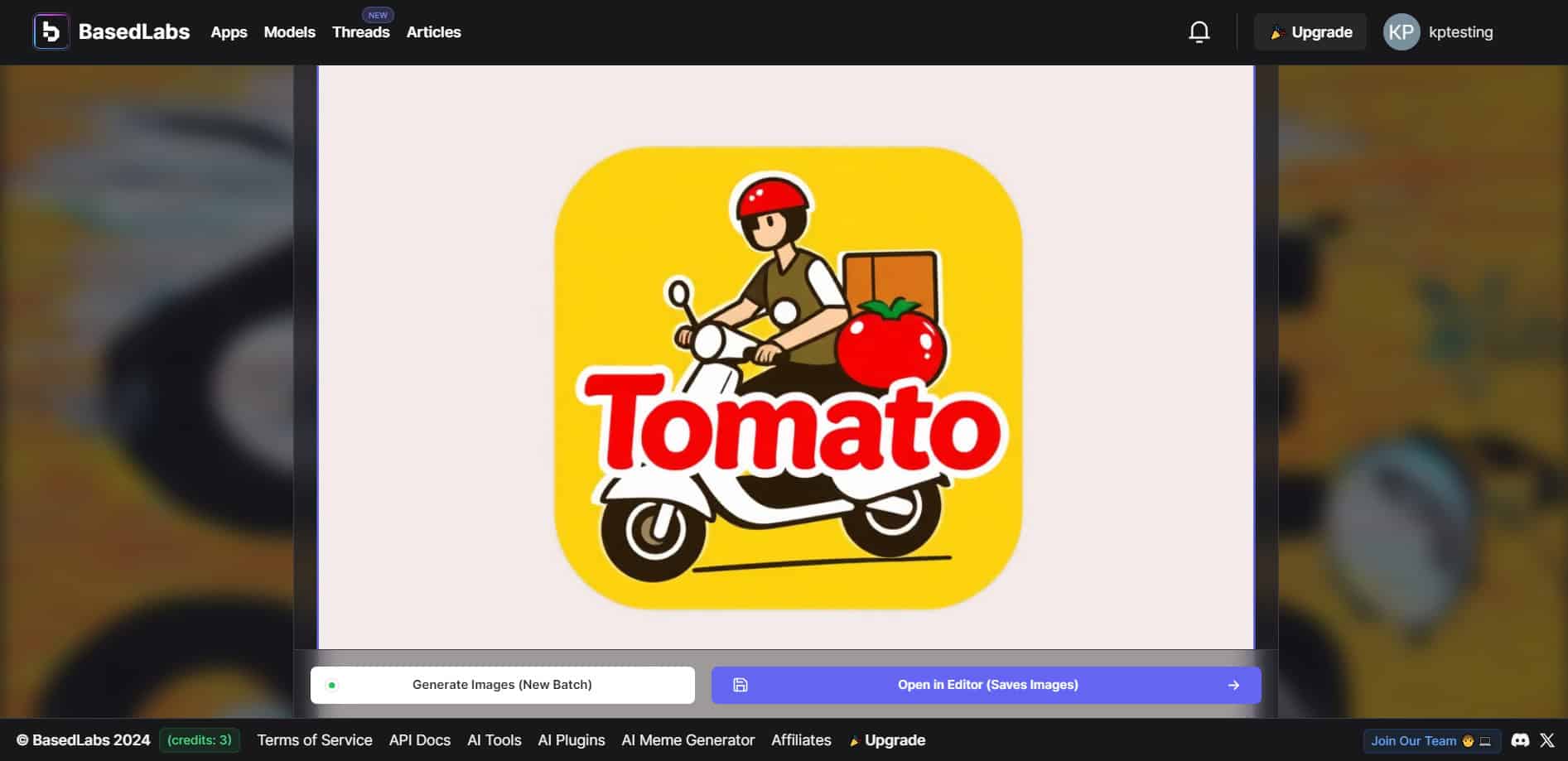
The transformative impact of AI image generators extends far beyond mere automation of art creation. These technologies challenge traditional notions of creativity, allowing artists and designers to unlock new dimensions of their craft. This section will explore how AI image generators are redefining artistic expression and design processes, ultimately reshaping the entire landscape of creativity.
Fostering Collaboration Between Humans and Machines
AI image generators function as tools that enhance human creativity rather than replace it. By serving as collaborative partners, these AIs enable artists to explore uncharted territories and experiment with unusual ideas. The interplay between human intuition and machine-generated output encourages a symbiotic relationship that fuels artistic exploration.
Artists can leverage AI image generators to brainstorm concepts and visualize initial ideas, streamlining the creative process. The ability to quickly iterate and refine designs empowers creators to realize their visions more efficiently while preserving their unique artistic voice.
This collaborative dynamic is evident in various artistic projects where artists have embraced AI as co-creators. From experimental installations to digitally-mediated performances, the incorporation of AI into the creative process invites fresh perspectives and novel forms of expression.
Democratizing Access to Artistic Creation
One of the most profound impacts of AI image generators is their ability to democratize artistic creation. With user-friendly interfaces and minimal barriers to entry, anyone—from hobbyists to professionals—can create visually compelling content without extensive training or resources.
This newfound accessibility shatters previous assumptions about who can be an artist, leveling the playing field and inviting diverse voices to contribute to the artistic conversation. Individuals who may have felt excluded from traditional art circles now possess the tools to express themselves creatively.
Moreover, the proliferation of AI-generated images can inspire even seasoned artists to explore new styles and mediums, finding inspiration in unexpected places. By broadening the definition of creativity, AI image generators pave the way for a richer, more inclusive artistic landscape.
Enhancing Efficiency in Design Workflows
In design industries where deadlines are often tight, AI image generators serve as invaluable assets for enhancing efficiency. Creatives can rapidly generate multiple iterations of designs, allowing for quick adjustments and refinements.
For graphic designers, marketing teams, and content creators, the ability to produce high-quality visuals in a fraction of the time traditionally required frees up valuable resources for strategic planning and conceptual development. This increased efficiency enables teams to focus on higher-level tasks, improving overall productivity and innovation.
As AI continues to evolve, we can expect the integration of image-generation tools into established design software. Such advancements would further streamline workflows, ensuring that creators remain agile in a fast-paced environment.
Beyond the Hype: The Practical Applications of AI-Generated Images in Business and Industry
While the artistic potential of AI-generated images is undeniably exciting, their practical applications extend well into business and industry. Organizations increasingly recognize the value of leveraging AI image generators to enhance branding, marketing efforts, product design, and more. This section will explore the growing relevance of AI-generated imagery in various sectors while providing insights into real-world applications.
Revolutionizing Marketing Strategies
AI-generated images present innovative opportunities for marketers looking to capture audience attention. Tailored visual content created through AI can be used across diverse platforms, ensuring consistency while appealing to target demographics.
By generating unique visuals aligned with brand identity, businesses can stand out in a crowded digital landscape. Customized images can be utilized in advertisements, social media campaigns, and website graphics, enhancing overall engagement and conversion rates.
Additionally, AI tools enable marketers to rapidly generate assets for A/B testing, allowing them to identify which visuals resonate most effectively with audiences. This data-driven approach empowers brands to optimize their marketing strategies and enhance their return on investment.
Streamlining Product Design and Prototyping
The integration of AI image generators into product design processes offers organizations the ability to accelerate prototyping and visualization. Designers can produce high-fidelity renders of products, packaging, or environments without needing extensive manual modeling.
This capability reduces the time and costs associated with traditional design methods, fostering faster decision-making and iteration cycles. Companies can experiment with various aesthetics and functionalities, conducting virtual focus groups to gauge consumer reactions before physical prototypes enter production.
Furthermore, AI-generated visuals facilitate enhanced presentations for stakeholders, investors, or clients. By showcasing realistic previews of products or concepts, designers can communicate their vision more effectively, increasing buy-in and support.
Improving Content Creation for Media and Entertainment
In the age of digital media, content creation is constantly evolving. AI-generated images offer significant advantages for filmmakers, game developers, and content creators seeking to enrich storytelling and enhance visual experiences.
For filmmakers, AI can assist in generating background visuals or concept art, allowing creative teams to visualize scenes and settings before final production. Game developers benefit from AI-generated assets that can populate immersive worlds, reducing the burden of manual asset creation while maintaining high-quality standards.
Additionally, content creators on platforms like YouTube or Instagram can utilize AI-generated images to enhance their visual storytelling, attract viewers, and establish their brand identities. The rapid generation of images allows creators to maintain a steady flow of engaging content without sacrificing quality.
Text-to-Image Magic: Understanding the Technology Behind AI Image Generation
At the heart of AI image generation lies a complex tapestry of machine learning algorithms and neural networks. To fully appreciate the capabilities of these tools, it’s essential to examine the underlying technology and methodologies that drive their performance. This section will explore the science behind AI image generators, highlighting the mechanisms that enable them to transform text prompts into stunning visuals.
Generative Models: An Overview
Generative models form the backbone of many AI image generation systems. These models learn from vast datasets containing images paired with descriptive text, enabling them to understand the relationships between words and visual elements.
Through a process called training, generative models adjust their parameters to minimize the difference between generated images and actual images in the dataset. This iterative learning process equips the models with the capacity to synthesize new images based on user-produced prompts, essentially imagining visuals that do not exist.
Variations of generative models, such as GANs, VAEs (Variational Autoencoders), and diffusion models, utilize different approaches to achieve similar ends. Each method presents unique advantages and challenges, contributing to the diversity of AI image generators in the market.
The Role of Neural Networks
Neural networks play a crucial role in the functioning of AI image generators. Comprising interconnected layers of nodes, these networks process data and extract meaningful patterns through hierarchical representations.
Convolutional neural networks (CNNs) are particularly effective in analyzing visual data, detecting features, and recognizing objects within images. Consequently, they are widely employed in image generation tasks, helping to ensure that generated visuals align with user expectations.
Transformers, a type of neural network architecture, have gained prominence due to their ability to model relationships between elements in sequences. In the context of image generation, transformers can efficiently analyze textual prompts, translating words into visual components that the model can incorporate into its output.
Fine-Tuning and Prompt Engineering
Fine-tuning plays a vital role in optimizing AI image generators for specific applications. By adjusting hyperparameters, modifying architectures, or utilizing specialized datasets, developers can enhance the performance of models for targeted tasks. Fine-tuning ensures that AI image generators remain versatile and responsive to user needs.
Prompt engineering, the art of crafting effective textual prompts, is equally important in maximizing the potential of AI image generators. Well-structured prompts can yield more coherent and relevant visuals, leading to higher satisfaction rates for users.
Understanding how to communicate ideas effectively to AI models is key to unlocking their capabilities. This involves experimenting with different phrasing, styles, and contexts to elicit desired outputs. As users become adept at prompt engineering, they can harness the true power of AI-generated imagery to bring their visions to life.
Ethical Considerations in AI Image Generation: Bias, Copyright, and Authenticity
As we embrace the magnificent potential of AI image generators, it is crucial to address the ethical considerations surrounding their use. Issues such as bias, copyright infringement, and questions of authenticity pose significant challenges that warrant careful examination. This section will discuss these concerns, advocating for responsible practices within the realm of AI-generated imagery.
Addressing Bias in AI Models
The datasets used to train AI image generators often reflect societal biases present in the data they consume. If left unchecked, these biases can manifest in the outputs produced by the models, perpetuating stereotypes and reinforcing harmful narratives.
To mitigate bias in AI-generated images, developers must prioritize diverse and representative datasets that encompass a range of cultures, identities, and perspectives. Ongoing assessment and evaluation of generated outputs are essential in identifying and rectifying instances of bias that may arise over time.
Encouraging transparency and accountability in AI development can foster trust among users and stakeholders, establishing guidelines that safeguard against biased practices.
Navigating Copyright Concerns
The rise of AI-generated images raises important questions about ownership and copyright. As machines create visuals that mimic existing works, determining who holds the rights to these images becomes increasingly complicated.
Creators using AI image generators must familiarize themselves with copyright laws and regulations surrounding their outputs. Some jurisdictions may classify AI-generated images as public domain, while others could attribute ownership to the developers of the AI itself.
Establishing clear guidelines for the use of AI-generated content is crucial in fostering a fair and equitable landscape for creators. Artists must ensure that they respect copyright when utilizing existing materials and navigate the murky waters of intellectual property as they engage with AI-generated imagery.
Balancing Authenticity and Automation
With the advent of AI-generated images, questions regarding authenticity and originality have come to the forefront. Creators may grapple with the notion of whether images produced by AI can be considered “true art” and whether they hold the same value as human-created works.
It is essential to acknowledge that AI image generators are tools that can augment human creativity rather than replace it entirely. While these tools can produce stunning visuals, they lack the emotional depth, intent, and context that characterize authentic human expression.
As the use of AI-generated imagery expands, it becomes imperative for creators to define their intentions when incorporating these tools into their work. Transparency about the role of AI in the creative process can foster genuine connections with audiences and promote a more nuanced understanding of artistry in the digital age.
The Future of Image Generation: Exploring the Emerging Trends and Possibilities
As AI image generation technology continues to advance, we can anticipate a future marked by innovative trends and expanded possibilities. This section will delve into the emerging landscape of AI-generated imagery, highlighting key developments that will shape the future of this exciting field.
Personalization and Customization
One of the most promising trends in AI image generation is the move toward increased personalization and customization. As technology evolves, users will have greater control over the attributes and characteristics of generated visuals, allowing for tailored content that resonates with individual preferences.
This shift toward personalization will enable brands to strengthen their connections with consumers by delivering visuals that align with unique identities and values. In turn, this trend will foster more engaging and meaningful interactions between individuals and the content they consume.
Integration with Augmented and Virtual Reality
The integration of AI image generation with augmented reality (AR) and virtual reality (VR) technologies is poised to revolutionize the way users experience digital content. Imagine walking through a virtual space populated with dynamically generated art tailored to your tastes, or trying on clothing designed by AI before making a purchase.
As AR and VR technologies continue to mature, AI-generated imagery will play a crucial role in creating immersive and interactive environments. This convergence will allow users to engage with visual content in unprecedented ways, breaking down barriers between the digital and physical realms.
Collaborative Platforms and Communities
The future of AI image generation will likely see the emergence of collaborative platforms that foster creativity among users. These platforms will serve as hubs for sharing ideas, concepts, and artwork, encouraging collective exploration and experimentation.
By harnessing the power of community-driven development, creators can collectively refine AI models, discover new applications, and inspire one another to push boundaries. This collaborative spirit will cultivate a vibrant ecosystem where creativity flourishes and innovation thrives.
Evolving Standards and Regulations
As AI image generation becomes more prevalent, the establishment of standards and regulations will be crucial. Governments, organizations, and stakeholders will need to collaborate to define ethical frameworks that govern the use of AI-generated imagery.
These frameworks should prioritize transparency, accountability, and fairness while safeguarding the rights of creators. By laying the groundwork for responsible practices within the industry, we can ensure that the benefits of AI image generation are realized without compromising ethical principles.
Choosing the Right AI Image Generator for Your Needs: A Guide to Features and Capabilities
Selecting the right AI image generator involves understanding your specific needs and preferences while considering the unique features offered by various platforms. This section will guide you through the essential factors to evaluate when choosing an AI image generator, empowering you to make informed decisions that align with your creative goals.
Assessing Your Use Case
Before diving into the technical aspects of AI image generators, it’s crucial to clarify your intended use case. Are you a professional artist seeking to enhance your portfolio, or a marketer looking to create customized visuals for campaigns?
Understanding your objectives will inform your choice of platform, as each AI image generator caters to different user requirements. For instance, if you’re focused on producing high-quality artwork or illustrations, DALL-E 2 may be an ideal fit. Alternatively, if you prioritize customization and flexibility, Stable Diffusion may better suit your needs.
Evaluating Output Quality
The quality of generated images is a paramount consideration when selecting an AI image generator. Look for platforms that showcase their outputs prominently, allowing you to assess the fidelity, detail, and coherence of generated visuals.
Examine samples that align with your desired aesthetic or purpose. Consider factors such as color accuracy, composition, and the ability to convey complex ideas. High-quality outputs will enhance your creative endeavors and elevate the overall impact of your work.
Considering Accessibility and Usability
Ease of use plays a significant role in the overall user experience with AI image generators. Opt for platforms with intuitive interfaces that facilitate seamless navigation and clear instructions.
Evaluate the accessibility of the platform, including availability on different devices, compatibility with existing software, and any learning resources provided. A user-friendly platform will enable you to focus on creativity rather than troubleshooting technical issues.
Exploring Community and Support Resources
Lastly, consider the community and support resources available for each AI image generator. Engaging with a vibrant community can provide valuable insights, encouragement, and inspiration as you navigate the world of AI-generated imagery.
Look for platforms that offer forums, tutorials, and documentation to assist users in mastering the tools. Active communities often contribute to ongoing improvements in AI models, leading to a more enriched experience for all users.
From Sketches to Masterpieces: Mastering the Art of Prompt Engineering for AI Image Generators
Prompt engineering is a critical skill for users looking to maximize the potential of AI image generators. Crafting effective prompts enables you to communicate your ideas clearly and elicit desired outcomes from the model. In this section, we will explore the nuances of prompt engineering, providing tips and strategies to help you master the art of guiding AI image generation.
The Importance of Clarity and Specificity
When formulating prompts, clarity and specificity are paramount. Vague or ambiguous requests can lead to unexpected outputs that may not align with your vision. Instead, aim to articulate your ideas as precisely as possible.
Provide context and detail within your prompts, specifying elements such as subjects, styles, colors, and emotions you want to convey. The more information you provide, the better equipped the AI model will be to produce visuals that meet your expectations.
Experimenting with Language and Structure
Prompt engineering often involves trial and error, and experimenting with different language and structures can yield fascinating results. Play around with synonyms, adjectives, and phrases to determine how they influence the generated imagery.
Consider incorporating stylistic references or comparisons to established artworks or genres. For example, if you desire a surrealist landscape, mention renowned surrealist artists to guide the AI in shaping the visual narrative.
Iterative Refinement and Feedback
Creating impactful prompts is an iterative process that requires refinement over time. Analyze the outputs you receive and identify patterns or themes that resonate with your intended vision.
If certain prompts yield unsatisfactory results, take note of elements that may require clarification or adjustment. Incorporate this feedback when crafting future prompts, gradually honing your ability to elicit the desired imagery.
Moreover, seeking feedback from peers or fostering discussions within creative communities can provide fresh perspectives and insights on prompt engineering techniques. Collaborating with others can expand your understanding of effective prompt formulation.
AI Image Generation in Action: Inspiring Examples and Case Studies
To illustrate the immense potential of AI image generation, we will explore inspiring examples and case studies showcasing the diverse applications of this technology. These narratives highlight how individuals and organizations have successfully harnessed AI-generated imagery to create impactful and memorable content.
Transforming Brand Identity Through AI-Generated Visuals
A notable example comes from a fashion startup that sought to differentiate itself in a saturated market. Leveraging AI image generators, the team created eye-catching visuals for their social media campaigns, showcasing their unique style and aesthetic.
By utilizing AI-generated imagery, they were able to produce high-quality content rapidly, resulting in increased engagement and visibility among their target audience. The incorporation of AI into their branding strategy allowed them to reinforce their identity while maintaining a fresh and innovative presence in the marketplace.
Collaborative Art Projects Enabling Diverse Expression
Art collectives and community-driven initiatives have capitalized on AI image generators to foster collaboration and inclusivity. One such project invited participants from diverse backgrounds to submit prompts, which were then transformed into visuals by an AI image generator.
This initiative culminated in a vibrant exhibition featuring the collective artwork, celebrating the richness of cultural perspectives and artistic voices. By harnessing AI technology, the project not only showcased individual creativity but also emphasized the power of collaboration and shared expression.
Advancing Scientific Research Through Visualization
AI image generators have found applications beyond conventional creative fields, extending into scientific research and communication. A research institution utilized AI-generated imagery to visualize complex data and phenomena, making it more accessible to broader audiences.
By transforming intricate scientific concepts into engaging visuals, the institution enhanced its outreach efforts and improved public understanding of research findings. This innovative use of AI-generated imagery highlights the potential of these tools to bridge gaps between academia and the general public.
Conclusion
As we stand on the precipice of a new era in creativity and innovation, the question of which AI can generate images has taken center stage. Technologies like DALL-E 2, Stable Diffusion, and Midjourney have paved the way for limitless possibilities, transforming artistic expression and reshaping industries along the way.
While navigating the complex landscape of AI-generated imagery, it is vital to remain conscious of the ethical implications and responsibilities that accompany these advancements. By embracing collaboration, transparency, and inclusivity, we can harness the power of artificial intelligence to foster a vibrant creative ecosystem that celebrates diverse voices and nurtures originality.
As we look to the future, we can anticipate a world where AI image generators become indispensable tools for artists, businesses, and innovators alike. By cultivating a deeper understanding of these technologies and honing our skills in prompt engineering, we can unlock a treasure trove of creative potential, forever altering the way we perceive and create visual content in the digital age.
Looking to learn more? Dive into our related article for in-depth insights into the Best Tools For Image Generation. Plus, discover more in our latest blog post on AI Animation Generator. Keep exploring with us!
Related Tools:
Image Generation Tools
Video Generators
Productivity Tools
Design Generation Tools
Music Generation Tools
For more AI tools, explore all categories by clicking here.

